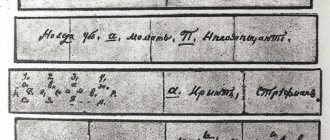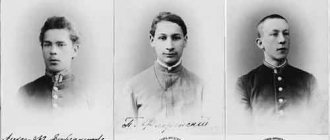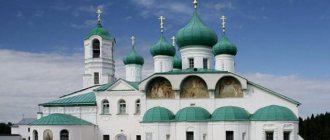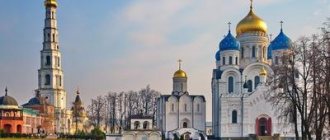photo: Biblioteka-geo.ru
During a difficult period in Russian history, Alexander Nevsky, through his own deeds, decided whether our Fatherland and the Russian people would stand or sink into oblivion like others...
The merit of Nevsky can be considered that different Slavic tribes united, recognizing themselves as one whole, a single community - Russian.
“Alexander was distinguished by the fact that he managed to unite both his squad and his brother’s squad into a single army, and this is the Novgorod militia, city and zemstvo. The same Pskovites, the same Ladoga residents, that is, he had the weight of a warrior, such authority that others obeyed him,” - Alexey Shishov, military historian, writer.
It would seem that the exploits of Alexander Nevsky are undeniable, he saved the Russian lands from the crusaders, spread the Orthodox faith to the north-west and did not suffer a single defeat in battles.
But those who like to destroy myths do not abandon their attempts to discredit the Grand Duke. They accuse him of the fact that the battles won were not so significant, and at the end of his life the famous warrior completely submitted to the Golden Horde. How did everything really happen, what do the battles on the Neva and the Battle of the Ice mean in the fate of our country?
Battle of the Neva
July 1240, Prince Alexander is 19 years old, he leads his small squad into battle with the army of the Swedes and does not yet know that he will soon become a legend.
Alexander Nevsky in painting
For now he is just a prince, the second son of Prince Vladimir, who became the heir after the death of his elder brother. Alexander moves towards the Neva, to the place where the Izhora River flows into it - it was here that the Swedes landed on the shore in their boats and set up camp, ready to capture Ladoga and Novgorod.
“If anyone comes to us with a sword, he will die by the sword. This is where the Russian land stands and will stand,” - Prince Alexander Nevsky.
The Swedes were five thousand, but the prince managed to hastily collect only one and a half thousand. It may be worth waiting for reinforcements, but the invaders are not yet expecting an attack and their position is unfavorable for defense. If we don't take decisive action now, things could change.
Alexander utters a phrase that will later become popular: “God is not in power, but in truth!”
He had a commander's foresight, that is, he saw the battlefield, he knew a lot about the enemy; understood how he could hit, how he could go; knew the weaknesses of his enemy.
How does a nineteen-year-old prince manage to choose the right strategy, and where does a very young man get the determination to resist the powerful crusaders?
Founding of cities
The Grand Duke not only fought. He built fortresses on the Shelon River. He saw the main purpose of new cities in protecting the western borders. At the age of 18, Alexander Yaroslavich already knew a lot about construction and applied his knowledge in practice. In 1239 he founded the city of Porkhov and designed fortifications around it. The building was wooden. Subsequently, more than a century later, a stone fortress was built here. Founded by Alexander Nevsky, Porkhov is also on modern maps: it is located in the Pskov region. The ancient fortress has survived to this day.
The childhood of Alexander Nevsky
Alexander underwent the rite of initiation into a warrior—princely tonsure—as a child, when he was four years old. Father Prince Yaroslav Vsevolodovich himself was more than once called upon by the residents of free Novgorod to defend the city from invaders and saw in his sons the continuers of his military cause.
“Princely education is, of course, a separate education that was carried out starting from four to five years old. There was a ceremony of tonsure, hair was cut off for the first time, the father gave a horse and a child’s weapon. From that moment on, a person was considered a man and moved to the male half of the house. A boyar-educator was always assigned to him, this same nanny, who, even before he came of age, was with the prince all the time and monitored his successes,” Tatiana Chernikova, Candidate of Historical Sciences, Associate Professor of the Department of World and Russian History at MGIMO.
It is known that already in childhood the prince was put on a horse and taught to be a warrior, because this was precisely the main occupation of the prince. In those days, everyone always fought, all the time and every year the Russian prince had several soldiers, especially in times of political fragmentation.
“Boyar Fyodor Danilovich, who taught him, was clearly chosen as the most capable governor for mentoring activities. And the result showed that the choice was correct. Fyodor Danilych turned out to be a very good specialist and prepared the boy perfectly,” Volkov Vladimir, Doctor of Historical Sciences, Professor of Moscow State University. Lomonosov.
The young prince learned big politics from hunting and feasts. This may seem strange today, but in the 13th century, feasts and hunting were by no means an idle activity.
Feast in Rus'
Feasts are now in our understanding: people gathered to eat and drink well. But this is a completely wrong idea. Besides the fact that they drink and eat, the feast is, first of all, a council between the prince and his retinue. Serious things are discussed there, so naturally the prince took part in this and also watched how it was done. While hunting, the prince learned to wield weapons, developed physical strength and improved his horse riding skills.
Is Alexander the Great a genius or a madman?
The Russian aristocracy valued literacy no less than military skills. The prince's son was taught to write on a juniper tablet filled with wax, introduced to the chronicles, including the exploits of his namesake - Alexander the Great, and the prince's heart sank: he, too, was Alexander and, perhaps, exploits awaited him.
In July 1240, the Swedish army left along the Neva, planning to capture Ladoga. At the head of the campaign are several bishops, this is the very beginning of the crusades. The Crusaders consider the Orthodox to be barbarians and plan not only to seize and plunder the lands, but also to completely change the worldview of the Russians.
“This is similar to the beginning of the Crusades, and the Swedes in this case performed the function of armed educators of the Russian barbarians, who needed to be brought to the Holy See, to the Holy Roman See. This was the main task of this campaign,” Sergey Perevezentsev, Doctor of Historical Sciences, Professor of Moscow State University. Lomonosov.
But politics and religion, by and large, are just a cover: the invaders need the Novgorod lands, which the Horde hordes that captured Rus' did not reach.
Swedish knights sail along the Neva
The calculation of the aggressors is simple - the bloodless Russian squads will not be able to defend their estates and therefore they must have time to profit from other people's goods.
“It seemed to all of Europe that Rus' had perished. As if her principalities could not rise and that she would not be able to assert herself again. But in Europe they also knew well that some part of Rus', and this is the entire north and north-west, had not yet fallen under the rule of the Mongols, that is, it was a tasty morsel that could be easily conquered. Novgorod at that time was a huge city for Europe, several tens of thousands of inhabitants lived in it and, most importantly, it was one of the richest trading cities, that is, the spoils could be taken there immeasurably, and the Swedes, naturally, hurried,” - Shishov Alexey, military historian, writer.
Introduction
Alexander Yaroslavich Nevsky (1221-1263) - Prince of Novgorod, Grand Duke of Kiev, Grand Duke of Vladimir, famous Russian commander, visionary and wise politician, great figure of ancient Russia. In the 13th century, the most difficult period in the history of Rus' began: at the same time, the Slavic state was attacked by different sides: from the east - the Mongol hordes, from the west - knights, the state was also attacked by Lithuania. At this grand hour, Alexander Nevsky was to be born to save Russia and protect it from a hostile origin. This Grand Duke, who showed political intelligence and concluded treaties, repelled the attacks of the Germans, Swedes and Lithuanians and tried to maintain friendly relations with the horde. Largely thanks to the activities of Alexander Nevsky, his relative Dmitry Donskoy managed to defeat the Mongol-Tatars in 1380. The prince established peaceful relations with the Horde, Rome and Lithuania and tried to protect Russian sovereignty and retain as many forces as possible to break the yoke of the Mongol Tatars.
This brief summary describes the life, achievements, victories and historical value of Alexander Nevsky not only for Ancient Rus', but for the entire history of Russia. The activities of Alexander Nevsky are extremely interesting for analysis, since he is the greatest prince of the ancient world, to whom the Russian Orthodox Church even awarded the rank of saint. In addition, Alexander Nevsky is the patron saint of the city of St. Petersburg, where I live.
Swedes' campaign against Novgorod
A hundred augers (single-masted ships) with 15-20 pairs of oars on board set off from Sweden on a trip to Novgorod. Each auger is capable of transporting 80 people or, for example, 50 soldiers and 10 horses. Thus, the Swedish army consisted of at least 5 thousand soldiers, and possibly more.
At that time, a 5,000-strong army for Europe was a large army, an army that was capable of conquering vast lands. Having gathered in Stockholm with the blessing of the king, it moved to the East.
Early in the morning, the headman of the Izhora land named Pelgusy appears to Prince Alexander and tells how he went on patrol at night to the place where the Izhora flows into the Neva, dozed off and saw a strange dream.
Pelgusius's dream about two princes
A boat floats across the sky, the rowers are not visible, but at the bow of the boat two princes in princely robes stand and talk to each other in thunderous voices. One prince says to another: “Well, brother Boris, shall we help our relative Alexander? - And the second one answers. “Yes, brother Gleb, we will help.”
Waking up, Pelgusius discovered that the Neva was filled with an enemy fleet, and realized that a battle was ahead in which he would have to rely only on heavenly patrons.
“Alexander Yaroslavovich makes the only correct decision that it is necessary to strike a very swift blow at the enemy before he strengthens himself. And he comes with a very small army - this is mainly his courtyard, his squad and a small militia detachment. They dealt the most severe and sudden blow to the enemy, who was not ready for this,” Volkov Vladimir, Doctor of Historical Sciences, Professor of Moscow State University. Lomonosov.
Alexander left Novgorod, taking with him 300 princely warriors, 500 Novgorod horsemen and 500 militia. Along the way, he was joined by 150 mounted warriors from Ladoga and 50 warriors from Izhora.
In the Swedes’ camp there are nobility and the commander of the army, and the second part are ordinary soldiers on ships. They are waiting for reinforcements to go to Ladoga. The prince leads the troops to the shore and hides them behind the wooded hills. Having carefully examined the location of the Swedish troops, he orders them to wait for the morning.
| Nikitich. The history of the Russian hero: epics and reality |
The Swedes did not know that the Novgorodians were somewhere close and, moreover, they did not expect an attack, so they did not post sentries into the forest thicket (there were only sentries around the perimeter of the camp).
Alexander personally became convinced of the enemy camp, determined the place where the ships were, where the bulk of the people were, where the horses grazed in the meadow. After studying, he splits his army into three parts. The first part went along the banks of Izhora with the task of breaking through to the center of the Swedish camp. The horse army under the command of Alexander himself was supposed to attack the tented town, and the Novgorod infantry was sent along the banks of the Neva to recapture as many ships as possible. A squad of archers remained in ambush to block the path of enemies who tried to escape.
“The attack, which occurred early in the morning, was a surprise for the Swedes, that is, they did not have time to fully equip their weapons, did not have time to drive this herd of horses,” Alexey Shishov, military historian, writer.
The life of Saint Alexander Nevsky has preserved for us not only a description of a brilliantly conceived and carried out battle, but also the names of the brave men from the princely squad: Gavrilo Oleksich, Sbyslav Yanukovych, Molchalin Yakov, Sava’s warrior from the junior squad, Ratmir, who died in the battle, and the Novgorodian Misha - namely he broke through into the center of the enemy camp and cut down the pillar that supported the top of the commander's tent.
Attack of Alexander Nevsky's squad on the Swedes' camp
When this tent collapsed, naturally, panic began among the Swedes, since this tent was a kind of banner of the royal army. The defeated banner meant only one thing - the end of the battle and certain defeat.
This, of course, greatly frightened the Swedes. Taking advantage of the confusion, the Novgorodians on foot managed to break through and capture several augers (ships), and without augers the enemy army was cut off from the sea and the river. After this, the Swedes began to panic. Those who had time rushed onto the still uncaptured augers and swam away.
The Novgorod Chronicle reports huge losses on the part of the enemy. “And great multitudes of them fell; they filled two ships with the bodies of the best men and sent them ahead of them on the sea, and for the rest they dug a hole and threw them there without number.”
The Russians, according to the same chronicle, lost only 20 people. This is the brilliant audacity of the young Novgorod prince, when he, with a small squad, that is, with a very small number of soldiers closest to himself, rushed to stop and prevent the very fact of the appearance of the Swedes on Russian soil, until they had time to take some serious positions. Alexander carried the Swedes out of Russian soil, and this battle became a legend.
Where is the fearless commander buried?
The saint's body was buried in the city of Vladimir. Many years later, in 1724, the relics of the Blessed One were transported from the Vladimir Nativity Monastery to the northern city on the Neva.
At the instigation of Peter I, the Nevsky Prince became the patron saint of St. Petersburg, the place where his small army defeated the Swedish crusaders. In the Trinity Church of the Alexander Nevsky Lavra, the relics of the intercessor rest to this day.
Expulsion of Alexander Nevsky from Novgorod
The influence of the young prince, who was henceforth called Nevsky, increased incredibly in Novgorod, which many boyars did not like. They achieved the expulsion of Alexander. He went first to his father in Vladimir, and then to reign in Pereslavl. But already the next year, 1241, the Novgorodians called on the famous winner to return. The Free City was again in danger: this time from German knights.
“In general, knightly patrols appeared 40 kilometers from Novgorod, that is, the situation was very dangerous. They began to build their castle fortress in Koporye. These stone strongholds, like outposts, were established by the knights in the occupied territories. Well, and then the Novgorodians realized that things were in trouble, they had to ask for help,” Tatyana Chernikova, Candidate of Historical Sciences, Associate Professor of the Department of World and Russian History at MGIMO.
Twenty-year-old Alexander Nevsky watches with pain in his heart as the Livonian knights capture Pskov and Koporye, and the oldest original inhabitants of these regions - the Vozhans and Chuds - become perevetniks, that is, traitors. Fleeing from the German invaders, the Pskovites flee to the protection of Prince Alexander, and Alexander recalls how, as a boy, he was forced to flee Novgorod during a hunger riot.
German knights crusaders
Nevsky understands: Rus' needs a unified government that will give people protection from internal strife and from foreign enemies. The prince calls upon large forces under his banner: his own squad of horsemen and heavily armed infantrymen, as well as the Novgorod militia led by the military leader Tysyatsky and the Vladimir-Suzdal regiments sent by his father. In total up to 10 thousand warriors.
Which direction should you choose to strike? Alexander reasons as follows: Pskov is the main goal, but it is well fortified, while the Germans have just begun to build the Koporye fortress, and besides, it is very far from the rest of the captured points. This means that help is unlikely to arrive quickly; the main thing is to act quickly.
Koporye Fortress
On the way to Koporye, the prince orders the capture of everyone he meets on the way, so that none of the local residents would have the desire to inform the Germans about the approach of the prince’s army for a reward.
The Russian army suddenly appears at the walls of the fortress, and without wasting time on a siege, breaks through the gates with special multi-pound logs.
“He exchanged the knights there for something, and he hanged all the traitors of the free city of Novgorod on the fortress gates,” Alexey Shishov, military historian, writer.
“In the summer of 6749. Prince Alexander came to Novgorod, and for the sake of Novgorod. That same summer, Prince Alexander went to Nemtsi to the city of Koporye, from Novgorod, and from Ladozhany, and from Korelo, and from Izheryan" (from the Novgorod Chronicle).
Alexander took the city. He brought some Germans to Novgorod, and released others. Then the prince turns to Pskov. The glory of the great victory runs ahead of Alexander Nevsky.
Without waiting for the battle, the inspired Pskovites open the gates to meet their liberator. The Livonian dog knights are enraged by such insolence, they are going on a big campaign. It's time for the arrogant Russian boy to be shown his place.
“They gathered forces from half of Europe, German knights from German lands were invited. The bishops of the Baltic states gave their troops to the Livonian Order (each of them had considerable strength). The Danish king Valdemar gave two princes of the blood and an army of Danes,” Alexey Shishov, military historian, writer.
1242 Russian merchants arriving from Revel (present-day Tallinn) inform Prince Alexander Nevsky of incredible forces that are preparing to invade.
Taking into account the experience of their careless predecessors, the German knights vigilantly guard all approaches to their military camps. Russian intelligence is ambushed by a detachment of the thousand's commander Tverdislavich and the governor Kerbet, dies, and only a few warriors manage to escape. But the information they bring to the prince is priceless. They enable Alexander to predict which way the invaders will move to Russian soil.
The prince determined a place where they could go to the lands of Pskov. It was important for him to meet the crusader knights where they could not go, and the place was chosen extremely well.
Liberation of Pskov
The Livonian Order began its offensive in August 1240. The Russian prince Yaroslav Vladimirovich joined him in the hope of receiving the Pskov throne. It was a time of internecine conflicts, and often princes helped foreign invaders. First, the knights captured Izborsk, defeating a small detachment of Pskovites who came to the aid of their neighbors near its walls. Then it was Pskov's turn. It didn't have to be conquered. A group of boyars decided to go over to the enemy’s side and opened the gates for him. As a result, Pskov found itself under German occupation for 1.5 years.
After the capture of Pskov, the Germans found themselves dangerously close to Novgorod. It was this event that prompted the boyars to call back Alexander Nevsky, who was with his squad in Pereslavl-Zalessky. The prince cleared the outskirts of the city from Livonian knights. Pskov remained the only stronghold of the invaders. This time the liberator decided not to act alone, but to wait for the help of brother Andrei from Vladimir.
With an unexpected blow from the west, the Russian squads cut off all approaches to the city for the Germans. With joint forces they liberated Pskov from the crusaders in March 1242. The Germans were chained and sent into captivity in Novgorod. The liberation of Pskov is considered the second great victory of Alexander Nevsky.
Alexander's father - Prince Yaroslav Vsevolodovich
The Battle of Lake Peipsi will go down in history as the Battle of the Ice. And even in official German chronicles (prone to embellish the actions of the Livonian Order), it will be recorded as an unconditional defeat of the knights.
How did a twenty-year-old Russian commander manage to break the German military machine? To find the answer to this question it is worth going back 7 years.
Battle on the Ice - Crusaders
1234 Alexander's father, Prince Yaroslav Vsevolodovich, comes out to meet the German knights, who, under the pretext of defending Catholicism, at the call of Pope George IX, are setting out to seize new lands.
“The German knights marched along the southern shore of the Baltic Sea, they crossed the entire Baltic region, captured East Prussia, conquered and subjugated the Prussians. The lands of Lithuania, Latvia, Estonia passed and reached the border of the Novgorod and Pskov regions. When they got there, at that time most of Rus' was under Mongol rule. And these principalities, which, according to the crusaders, were not able to somehow defend themselves, should have become easy prey,” - Alexey Shishov, military historian, writer.
Pskov, Izborsk, Tesovo, Novgorod - these cities attract knights like a magnet. There are abundant rows of merchants, many artisans who can be sold into slavery, forests rich in furs and rivers rich in fish.
Their population calls on Prince Yaroslav to protect the Novgorod and Pskov lands. He takes thirteen-year-old Alexander with him on a dangerous campaign, who has now become his father’s main hope.
“Alexander, he is the second son. He also had an older brother, Fedor. It is a personal tragedy for both his father and Alexander himself that his elder brother dies suddenly on the eve of his wedding in 1233, just on the eve of all these events. And then all attention was turned to the one who became the first-born because of this tragedy, they began to prepare that this was the future ruler, the future warrior,” Volkov Vladimir, Doctor of Historical Sciences, Professor of Moscow State University. Lomonosov.
Alexander is still a teenager, but he fights on equal terms with adult warriors and, most importantly, he evaluates the battle tactics chosen by his father. Having tired the enemy in a protracted duel, Prince Yaroslav destroys the “German pig” with flank attacks and forces the crusaders to flee the battlefield.
“And God helped Prince Yaroslav and the Novgorodians: they beat them to the river, and then several of the best Germans fell, some were wounded and fled to Yuryev, and others to the Bear’s Head” (from the Novgorod Chronicle).
At that time, princes and boyars, when going on a campaign, took relatives with them: children, sons, grandchildren, nephews, so that by example they would also learn to lead troops in future battles, that is, from the age of 13 to 14 years. In other words, at the age of 13, Alexander experiences the taste of victory for the first time.
The ice could not support the weight of heavily armed knights
During the battle of Prince Yaroslav on the Omovzha River, several knights in heavy armor fall into cold water, and seven years later, on the eve of a new battle, this episode appears before Alexander Nevsky’s eyes. What if we lure the Germans onto thin ice again?
| Prophetic Oleg: Great Novgorod and Kiev Prince |
Alexander decides to retreat back to the ice of Lake Peipsi, but even here, in fact, a battle can be fought. They plan the battle from defense.
The prince was taught from childhood to place a strong army in the center, and weaker ones on the sides. But Nevsky does the opposite: he places in the center not professional warriors from the squad, but untrained militias, whom the Germans can easily penetrate, but then surprises await the knights.
Alexander lines up his troops in front of a steep bank: the weakest, but most numerous militia from Vladimir stand first. Behind them on the cliff are carts, which Alexander orders to be chained, on the sides on the flanks are heavily armed Novgorod regiments, the strongest and most professional warriors. And behind a rock emerging from the water (later it would be called the Crow Stone), Alexander hid an ambush regiment.
“On heavy horses, also in heavy armor, they simply could not drive up the mountain, and it was impossible for the knights to overcome the carts, especially those connected by chains. The logic was that this wedge will certainly break through, this center, but the knights will have nowhere to move further, and they will be forced to upset their order, which is the key to their success,” Tatiana Chernikova, Candidate of Historical Sciences, Associate Professor of the Department world and national history of MGIMO.
German combat tactics are well known to Alexander; it is under this that he builds his defensive formations. Years later, his deployment would be called one of the most ingenious tactical decisions in the history of world wars.
So, April 5, 1242, minutes remain before the main battle.
The knights stood in their favorite formation - a wedge. The wedge did not have a sharp end, but a blunt one. Three to five of the most experienced warriors rode ahead, and then there was a build-up of people from right to left, and the result was such a “dumb pig,” as they called it in Rus'. Inside were foot soldiers - bollards - these were the bishops' militia. They stood in the center also so that they would not scatter at the beginning of the battle. Therefore, they were surrounded by mounted knights on all four sides.
Alexander’s idea works, the wedge finds itself clamped in a vice between a barricade of carts and two regiments of a well-armed Novgorod squad. In this situation, heavy knights in armor are deprived of their main advantage - the ability to strike powerfully with a spear.
“In Europe at that time they fought in a very strange way; the battle was a series of disparate duels. And the theater of combat operations itself did not involve powerful flank attacks,” Maxim Moiseev, Candidate of Historical Sciences, head of the department of the State Budgetary Institution of Culture in Moscow.
The defeat of the German troops was completed by the ambush regiment. Because of the Crow Stone, the cavalry falls on the Germans from the rear, the knights rush in all directions, and here the last ally of the Russian troops - native nature - enters the battle.
This is the famous cracked ice that dragged heavy crusaders to the bottom. For some, the armor alone weighed from 50 to 70 kilograms, plus the same amount hanging on the horse. Before battle, knights were lifted onto their horses either by squires or by a special winch. And having fallen from his horse, the knight was completely motionless and helpless. As a result, when the ice cracked and the prince’s squad was already attacking, they chose to flee. They were driven to the opposite bank.
Results of the Battle of the Ice
According to Russian chroniclers, in the Battle of Lake Peipus, the army of Alexander Nevsky managed to inflict enormous damage on the enemy: 400 killed, 50 captured. According to the Livonian Chronicle: 20 killed and 6 captured. The difference is significant only at first glance. It's all about the counting rules. Russian chroniclers counted everyone, but German ones only counted knights. Both data do not contradict each other, although some historians are trying to dispute this.
Crushing defeat of the Crusaders on Lake Peipus
The losses for the order were serious and, most importantly, these were the consequences of the battle - for more than 11 years the order did not dare to repeat the same action with the capture of Pskov and penetration further into the Novgorod territories.
Many knights were captured. Alexander Nevsky disgraced them because he led them to Pskov without a headdress with a rope around his neck, tied to his horses and barefoot. A knight who walks in such a position is already without honor. Usually knights were accustomed to wars according to the rules, where prisoners were treated differently. But it was such a tough act on Alexander’s part.
The prince’s act was a political gesture; it clearly demonstrated to all of Europe that the land that the crusaders had encroached on would not belong to them. Such a convincing message reached the recipient better than any words.
“After the Battle of Peipus, the very name - Alexander - terrified those who climbed onto the Russian borders. The guys were coming in to rob, that means, and suddenly a rumor spread - Prince Alexander himself was coming - that means, with his retinue. There were several cases when these territories were immediately liberated and people ran away. Because they understood that if Nevsky came, it would not seem like much,” - Sergey Perevezentsev, Doctor of Historical Sciences, Professor of Moscow State University. Lomonosov.
The name of Alexander Nevsky has become a legend. His talent as a commander was recognized by his compatriots and foreigners. Warriors and militias joyfully joined his banner. But why then did the illustrious prince not try to stand up for the Russian lands devastated by the Tatar-Mongols, but bowed his head before the Golden Horde and went to bow to Batu Khan?
“By this time, the Horde was already very superior to the European army from a military point of view. They have light cavalry and heavy cavalry, and, accordingly, all sorts of battering machines and other weapons that they use because they took them from the Chinese. They only fight in formation, so their military superiority was overwhelming. Heroic battles would lead to an equally heroic, but already, death,” Tatyana Chernikova, Candidate of Historical Sciences, Associate Professor of the Department of World and National History at MGIMO.
How the Russian ruler died
In 1262, when the arbitrariness of the Mongol tax farmers exceeded possible limits and the patience of the Russian people was running out, a mass uprising arose in several cities of Rus' at once. As a result, the tax farmers were expelled, and the angry Khan Berke began to prepare for a new ruinous campaign against Rus'.
During a long visit, the Russian ruler managed to convince the Mongol Khan, which saved his homeland from a new war. After spending almost a whole year in the Horde, the ruler fell ill.
On the way home, sensing his imminent death, he became a monk and went to God as a schema-monk with the name Alexy. The ruler died on November 14, 1263 in the Nizhny Novgorod region (Gorodets).
Golden Horde and Alexander Nevsky
The Horde is a true superpower of the Middle Ages. The scattered Russian squads are not yet able to overcome the powerful army. Union is the only way to survive and preserve our ethnic identity. And therefore, after the death of his father, Prince Yaroslav, Alexander went to the horde for a label for the khan's reign. This is what his father, the princes of Vladimir-Suzdal, Ryazan and many others did.
The Golden Horde haunted the Russian lands
“Alexander Yaroslavovich was, what we are saying now, a pragmatist - he is a real politician. He clearly assessed his own strengths and capabilities, the strengths and capabilities of the lands that were under his control and, accordingly, assessed any development of his aggressive foreign policy and clearly equated this with suicide. We didn’t dare to go to the horde, to have a direct confrontation for a very long time,” - Maxim Moiseev, Candidate of Historical Sciences, head of the department of the Moscow State Budgetary Educational Institution.
Alexander Nevsky has another reason why he agrees to peace with the horde, and this reason is faith. The cornerstone of all political and economic relations of the era.
“The Mongols had a main principle - not to quarrel with the gods and with the servants of the gods. Therefore, any denomination, any organization received complete freedom and exemption of their church from taxes. Issues of religious hatred and controversy simply did not arise. Therefore, there was no talk of any inculcation of one’s faith,” Tatyana Chernikova, associate professor of the department of world and national history at MGIMO.
The crusaders and the Pope personally repeatedly offered patronage to Prince Alexander Nevsky and the entire free Novgorod, convincing them that they were the only ones who could help fight the yoke. The benefactors are silent about what they will have to pay for this miraculous salvation.
"Alexander Nevsky receives papal legates." Artist Henryk Semiradski
Alexander corresponded with dad twice. The Pope urged him to convert to Catholicism. The first time, apparently, Alexander answered in a very politically correct way, because the Pope’s regattas came to him, but he cut them off, said that he would not change the faith of his ancestors, and remained Orthodox.
“We will not accept your faith!” - Alexander Nevsky
Alexander’s refusal to accept Catholicism is a real feat, but despite the complexity of the situation, the prince remained true to himself, his people and Orthodoxy.
This was probably one of the most heroic moments in its history and in the history of our country, because to refuse possible help at that time, quite powerful, say, the Teutonic Order or any other Western order, was an act. It was his choice, but it became our choice too.
The main books from which the future Prince Alexander Nevsky studied were the Bible and the “Teachings of Vladimir Monomakh.”
“There were several covenants that Vladimir Monomakh gave to his children and, accordingly, descendants. The main covenant is to keep the fear of God and remain Christians. This was the most important covenant - keep the Christian faith. The second testament - be merciful to your people, protect your people, but do not exploit them unnecessarily, be merciful to them,” - Sergey Perevezentsev, Doctor of Historical Sciences, Professor of Moscow State University. Lomonosov.
What precepts guided Prince Alexander Nevsky when he set out for a label to reign? Did he remember his father, a year ago, the prince Yaroslav, one of the most influential in Rus', poisoned in the Horde, or Prince Mikhail of Chernigov, executed for refusing to bow to the Horde idols? Have you thought about what fate awaits him and all the freedom-loving Novgorodians if the famous warrior, Prince Alexander Nevsky, does not bow his head now?
The 13th century gave us many saints and among them several holy princes. The central figures of the holy princes, the most famous and most revered, whose authority is constantly resorted to, are: Mikhail Chernigovsky and Alexander Nevsky.
They revealed two ways of the possible existence of Russian principalities in the 13th century. The first is the path of martyrdom for the faith. He was chosen by Mikhail Chernigovsky, who refused to bow to the pagan gods before entering the tent of Batu Khan.
Death of Prince Mikhail of Chernigov for the Christian faith
There was another way, the path of survival in the difficult conditions in which the Russian land found itself. This is the path Alexander Yaroslavovich took. People were needed, leaders were needed, princes were needed who would ensure the survival of the people. This is how Nevsky turned out to be a prince.
In 1248, Alexander received a label for Kyiv and the entire Russian land, but he did not go to Kyiv, devastated by the Tatar-Mongols, but settled in Novgorod. Later, he also received the Vladimir throne and for another 15 years successfully repelled all encroachments on the northwestern Russian lands, which flourished under his protection, paying off the horde with tribute.
“Novgorod traded not only its own commercial goods, but also eastern transit ones. The peculiarity of Novgorod trade is that it was in demand in Western Europe, but in order to receive these transit goods of the East, one had to be on good terms with the Golden Horde,” Tatiana Chernikova, associate professor of the department of world and domestic history at MGIMO.
In lands free from the Horde yoke, people quickly forgot about the Tatar-Mongol threat, and the thirst for freedom turned hot heads. In 1262, Tatar tribute farmers were killed in Vladimir, Suzdal, Rostov, Pereslavl, Yaroslavl and other cities.
| Ilya Muromets: life and exploits of the Russian hero |
Alexander Yaroslavich was forced to go to bow to the Horde khans. He agreed not only that they would not carry out a punitive operation, but also to cancel the general mobilization introduced by Khan Berke for the people of the Russian lands.
Khan needed to replenish his army in order to protect the borders of the Horde on the southern approaches. But the prince did not allow the Russian people to lay down their heads for the Mongol Khan. Berke had mercy - he did not send his hordes to Vladimir, to Suzdal.
Everything for the Fatherland
Alexander Nevsky also became famous as a wise ruler, politician, and diplomat. These talents were revealed during the reign in Novgorod, Vladimir and Suzdal, in concerns about relations with the Golden Horde. With his thoughtful actions and flexible policy, Alexander protected Russia for years from destruction by the Horde and prevented them from seizing the southern lands.
His services to the Fatherland were adequately appreciated: in 1547 the prince was canonized as an Orthodox saint and wonderworker. His life says that he won everywhere, but he himself was never defeated.
Holy Russian Orthodox Church.








